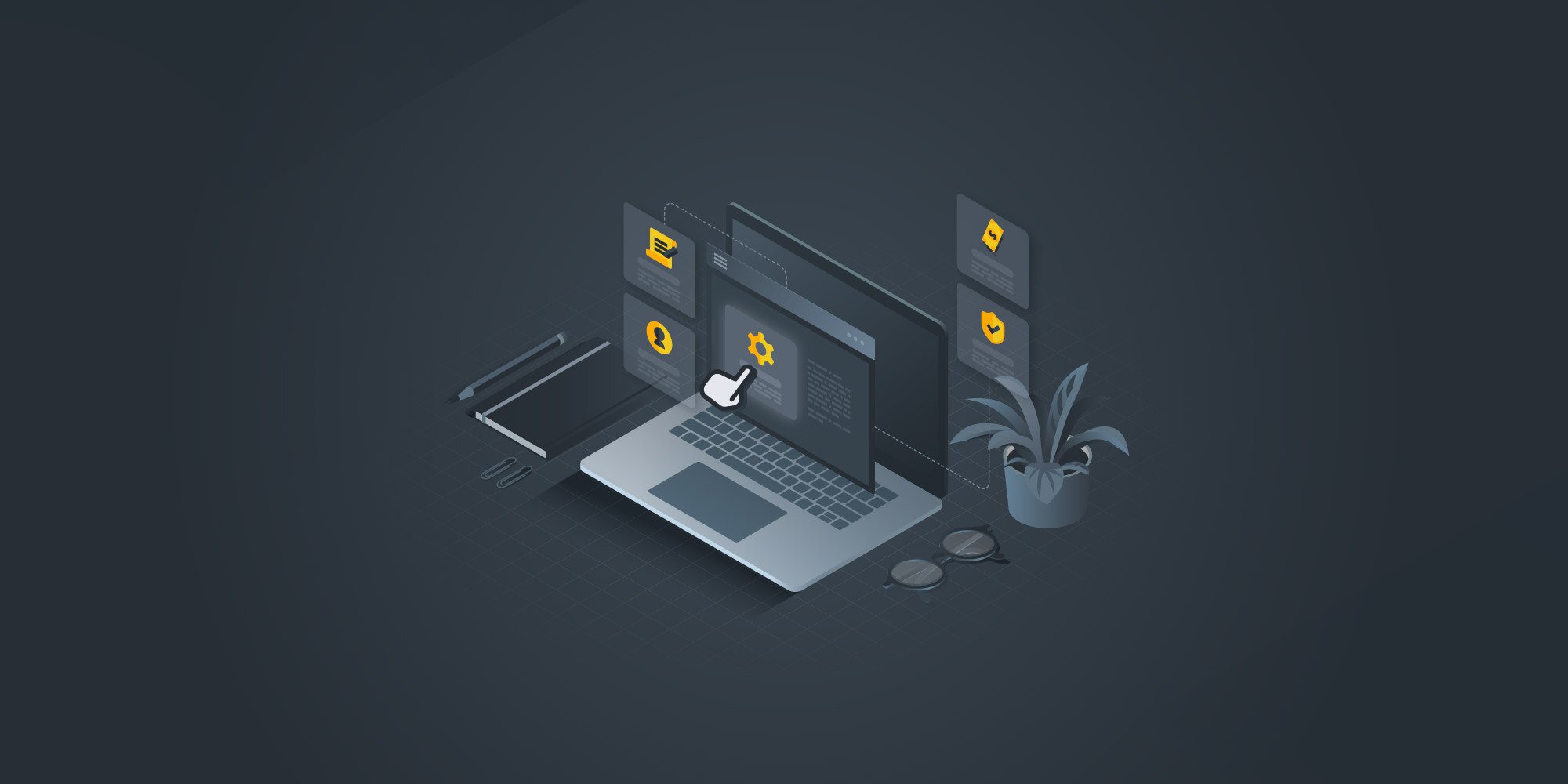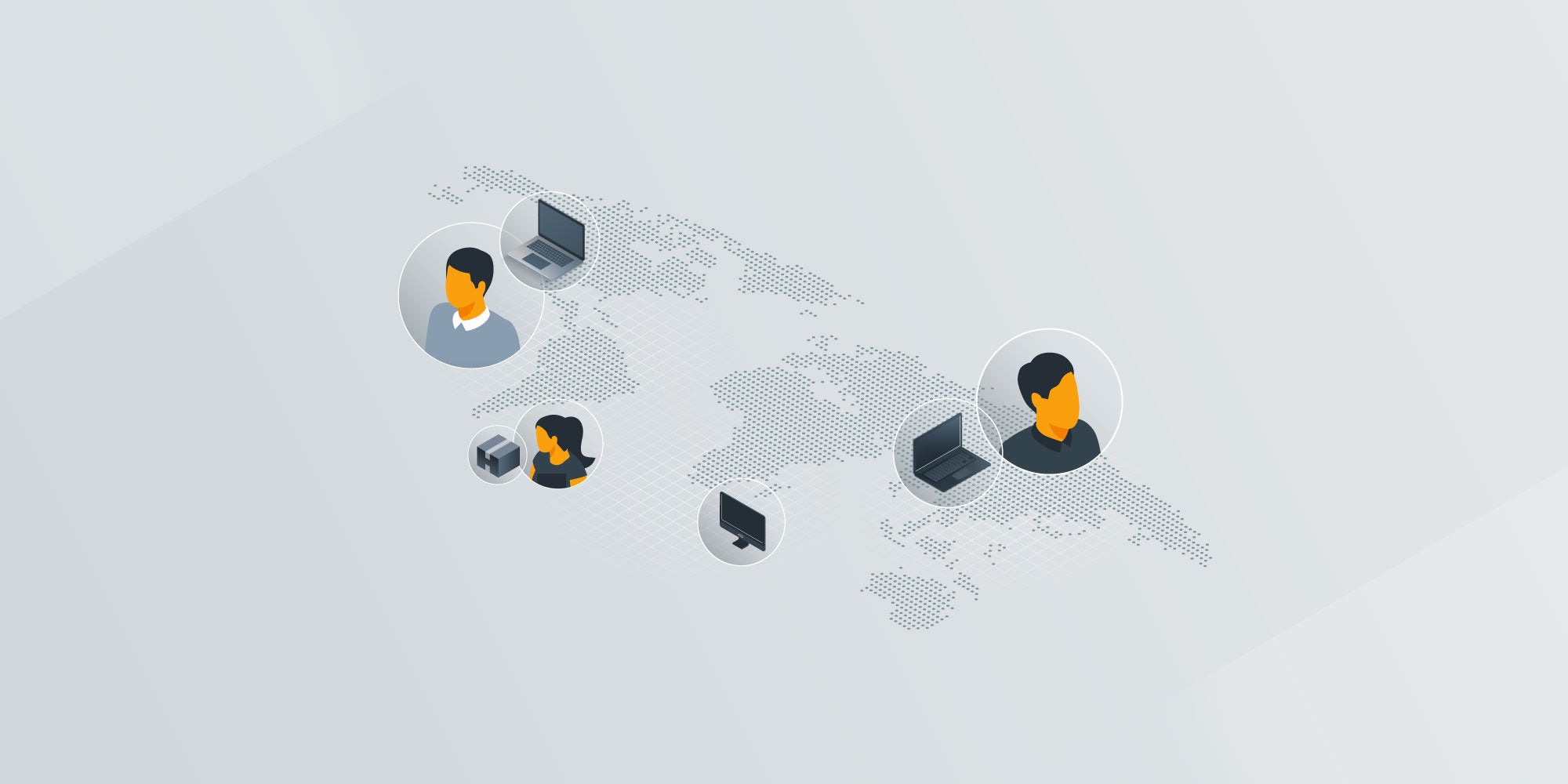Action plan for getting equipment back from terminated employees
 GroWrk Team
GroWrk Team
Job terminations affect individuals, but they also impact the company's bottom line. According to the Economic Research Institute, "When you dismiss an employee, typically it will cost between 50% and 60% of that person’s annual salary to refill the position."
Providing equipment is important when building remote teams, but it ultimately means that remote employees are in possession of valuable company assets. So what happens when they exit the company? How do you retrieve this equipment?
Companies need to implement policies that will help secure the devices and their data during the retrieval process. In this post, we will discuss how to retrieve all company equipment from terminated employees, what to consider when implementing an action plan to retrieve company equipment, best practices, and some considerations for employees.
If you are interested in learning how GroWrk can offboard employees and retrieve their devices in 150+, check out our product demo below.
How to get equipment back from terminated employee
Retrieving company equipment from a terminated employee can be a complex process. You have to coordinate between HR and IT departments to ensure employee equipment makes it back to your headquarters or any storage facility you use. For distributed teams, this can involve international logistics and a lot of back-and-forth emails with that employee.
For all this to go right, it's essential to assign responsibilities to either HR or IT to ensure a smooth retrieval. Let's break down what methods companies usually use to retrieve devices and the steps involved:
Formal agreements and documentation
Put the terms in writing
To start, ensure that all employees sign an employment contract that clearly states their responsibility to return company property upon termination. This contract should be signed at the beginning of employment and include details about the return process and consequences for failing to return company-owned equipment.
Who handles it: HR should handle the documentation and ensure that employees sign the necessary agreements when they receive company equipment.

Communication and coordination
Initiate recovery steps
When an employee is terminated, HR should immediately communicate with them to initiate the return of company property. This communication should include a detailed list of items to be returned and instructions on how to do so.
Who handles it: HR is generally responsible for contacting the former employee and coordinating the return process.
Request in-person return
If possible, request the terminated employee to return the company's equipment in person. This method ensures a quick and secure return.
Who handles it: HR should coordinate the in-person return, possibly with the assistance of IT to verify the returned items.
Shipping arrangements
Provide prepaid shipping labels
If an in-person return is not feasible, send the former employee a prepaid shipping label and box. Include clear instructions on how to pack and ship the items.
Who handles it: IT typically handles the logistics of providing prepaid shipping labels and tracking the returned items.
Arrange courier pickup
For added convenience, arrange for a courier to pick up the company equipment from the employee's location. This can help ensure that the items are returned promptly and securely.
Who handles it: IT or a third-party service management company can manage the courier pickup.

Follow-up and enforcement
Send reminders
If the equipment is not returned within the specified time limit, HR should send follow-up emails or letters reminding the former employee of their obligation to return the property.
Who handles it: HR handles the follow-up communication and keeps a record of all correspondence.
Legal action
If the company property is still not returned, consider taking legal action. This could involve filing a legal claim for the value of the unreturned items or reporting the situation as theft.
Who handles it: HR should consult with legal counsel to determine the best course of action based on state laws and the value of the equipment.
Final pay and deductions
Consider final paycheck deductions
In some countries, deducting the cost of unreturned equipment from the employee's final pay is permissible. However, this must be done in compliance with local laws, ensuring that deductions do not bring the employee's pay below the minimum wage.
Who handles it: HR and legal counsel should collaborate to ensure any deductions are lawful and properly documented.
By implementing these steps, companies can effectively retrieve company equipment from terminated employees. Clear communication, proper documentation, and coordinated efforts between HR and IT are essential to ensuring the return of company property and maintaining data security.
Action plan if the employee does not return the company equipment
Even if companies have agreements in place to ensure employees return company equipment, terminated employees might fail to comply with them. If that happens to you, here's an action plan your HR and IT teams can follow to get that device back into your IT closet:
-
Formal reminders and follow-ups
Send formal reminders listing the company property that needs to be returned. Include the signed employment contract or acknowledgment form detailing their obligation to return company-owned equipment. Follow up with additional reminders if necessary, clearly stating the deadline for compliance and potential consequences.
-
Provide shipping logistics
Make the retrieval process easy by offering a prepaid shipping label and a shipping box. This reduces the effort required from the former employee and increases the likelihood of receiving the computer equipment back. Arrange courier pickups if needed.
-
Consult legal counsel
If the equipment is still not returned, consult legal counsel to understand your options based on state laws. This might include sending a final warning letter outlining the legal implications or considering legal action such as filing a legal claim or reporting the unreturned items as theft.
-
Deduct from final pay
Where legally permissible, deduct the cost of the unreturned equipment from the employee's last paycheck. Ensure compliance with all relevant laws, including not reducing the pay below the minimum wage.
Note that in the United States, state laws prohibit employers from withholding the employee’s last paycheck until the equipment is returned. Wage-deduction laws also prohibit employers from deducting the value of the items from the employee’s final pay. Always make sure to follow local laws where your employees live to avoid any issues. -
Remote data wipe
If retrieving the physical devices proves impossible, ensure that all company data on the devices is securely wiped. Use MDM tools to remotely lock or wipe the devices, protecting sensitive information.
-
Write off the equipment
In some cases, it may be more cost-effective to write off the company equipment rather than pursuing it. This is especially true for older or less valuable items.
How GroWrk retrieves company property
GroWrk offers a robust solution for managing and recovering company laptops. With tracking and management systems in place, GroWrk never struggles with recovering laptops or other company equipment. This ensures that your business can operate smoothly without the hassle of missing equipment.

Best practices for retrieving a terminated employee laptop
The right equipment retrieval plan
A comprehensive equipment retrieval plan should consider various requirements, including hardware, network, and business operations.
According to Omer Kaan Aslim, president of Desired Outcomes, "These include: implementing equipment tracking software; documenting equipment assigned to employees; requiring employees to accept and sign an equipment agreement that includes a list of received equipment that must be returned upon termination."
He also emphasizes informing employees that the cost of any unreturned equipment will be deducted from their final pay and that shipping costs for equipment returns will be reimbursed if applicable.
Develop a proactive plan for managing data and app access
Data security is paramount when it comes to managing equipment returns.
As Heather Paunet, vice president of product management at Untangle, explains: “Employees can access business apps hosted in the cloud from any device, on or off of the corporate network."
She adds that "IT departments can minimize post-termination access by limiting how employees interact with the software while employed. Defining access levels in the beginning will make it easier to remove access permissions when an employee leaves the company."
In addition to protecting sensitive information, businesses need to ensure maximum productivity from their devices. We explained how this can be achieved in our blog on how to choose the right MDM software.
Trust but verify
While distributed employees need access to the company's data, this access can become a liability if an employee mistakenly shares sensitive data or intentionally leaks private information.
To prevent data leaks and other issues when retrieving equipment, companies must enforce processes that ensure the trustworthiness of employees and contracted parties with access to sensitive information.
During the onboarding process, when employees sign the equipment agreement, detail how to handle data inside the devices and the possible legal consequences if they fail to comply.
Consolidate and automate
Business and Information Technology (IT) are tightly coupled components of an organization. The modern enterprise requires a balance of these two areas to be successful. Traditionally, the lines between technology and business have been blurred because they were managed separately.
Matt Cox, senior director of technical operations at Solarwind, suggests that consolidating all IT equipment under one system provides a clear view of the technology infrastructure's life cycle, making it easier to track hardware devices regardless of location.
Automating risk detection can help monitor if the assigned equipment is in use and active, reducing the likelihood of remote workers using personal devices to access the company's data.
Integrate equipment management and IT Service Management
Integrating IT equipment management with service management is vital, especially within large organizations.
“The Center for Internet Security (CIS) lists inventory and control of hardware and software equipment as the top two recommended basic controls. Automated, centralized IT equipment management can fulfill these recommendations," as explained by Ian Aitchison, senior product director, ITSM at Ivanti.
"By integrating equipment management and service management," he adds, "IT has the foundation it needs to manage the entire life cycle of equipment, from onboarding through reclamation.”

Returning company property after termination: Employee guide
As an employee, it's important to follow policies for returning equipment back to your former employer when your contract ends. This ensures a smooth transition and avoids potential issues with your final pay. Here’s a guide to help you navigate the process:
-
Understand your obligations
Review your employment contract and any agreements you signed when you received your equipment. These documents usually outline the items you must return and their required condition.
-
Inventory the equipment
Make a list of all the property in your possession. This typically includes laptops, mobile devices, chargers, and other items you were issued. Verify this list against the records provided by your employer to ensure nothing is missing.
-
Follow procedures
Most organizations have a clear process for returning equipment. Follow the instructions provided by your HR or IT department. This may involve:
Prepaid shipping labels: If you’re working remotely, you might receive a prepaid shipping label and a shipping box. Pack the items securely and use the provided label to send them back.
In-person returns: If you are local, you may be asked to return the items in person. Arrange a time with your HR or IT department for the drop-off.
-
Ensure data security
Before returning a company laptop or other device, ensure that any personal data is removed. Follow your organization’s guidelines for data removal to protect your privacy and comply with policies. Your IT department may assist with wiping sensitive data from the devices.
-
Confirm receipt
After returning the items, request a confirmation from your employer. This confirmation should include a list of the items returned and their condition. Keeping a record of this confirmation can help resolve any disputes regarding the return of property.
-
Understand financial implications
Be aware that failing to return equipment can have financial consequences. Employers may deduct the cost of unreturned items from your final paycheck, as allowed by state laws. However, this deduction should not bring your pay below the minimum wage.
-
Seek assistance if needed
If you have any questions or encounter issues during the return process, contact your HR or IT department. They can provide guidance and help resolve any problems. If you don't get an answer from them, look into your local laws regarding abandoned property to understand what you can do with those devices.

GroWrk's laptop retrieval service
GroWrk takes responsibility for retrieving equipment from a remote employee during their exit from the company. With our service, you can rest assured that offboarding an employee and retrieving your company’s equipment will be hassle-free.
Efficient equipment retrieval
Our streamlined process ensures that all company equipment is returned promptly and securely. We handle everything from providing prepaid shipping labels to coordinating courier pickups, ensuring that your company property is retrieved without any extra effort on your part.
Hassle-free offboarding
GroWrk makes offboarding simple and efficient. We manage the entire process, so you don’t have to worry about the logistics of retrieving company equipment. Our team works closely with your HR and IT departments to ensure that all steps are handled smoothly.
Data security and compliance
Ensuring the security of your company data is our top priority. We provide guidance on securely wiping data from returned devices to protect sensitive information. Our service also complies with all relevant state laws, ensuring that equipment retrieval is conducted legally and ethically.
Real-time tracking and reporting
With GroWrk, you get real-time tracking and reporting of the retrieval process. Our system keeps you updated on the status of each piece of equipment, from the moment it’s shipped to when it’s securely returned. This transparency helps you maintain control over your assets and ensures accountability.
Cost-effective solution
Retrieving equipment can be costly and time-consuming, especially when dealing with remote employees. GroWrk offers a cost-effective solution that minimizes the financial and logistical burden on your company. Our service helps you avoid potential costs associated with unreturned equipment and ensures compliance with regulations.
Dedicated support
Our team is dedicated to providing exceptional support throughout the retrieval process. We are here to answer any questions and address any concerns, ensuring that you have a seamless experience. With GroWrk, you can focus on your core business activities while we take care of the rest.
Final thoughts
By following these steps, your company can recover all of its equipment from your remote employees when they leave the company. You can prevent potentially damaging situations from occurring and save yourself thousands in hard costs and lost productivity as well.
At GroWrk, we make the equipment retrieval process easy, confidential and secure so you can focus on more important things, like creating value for your organization. Book a demo today to get started.






